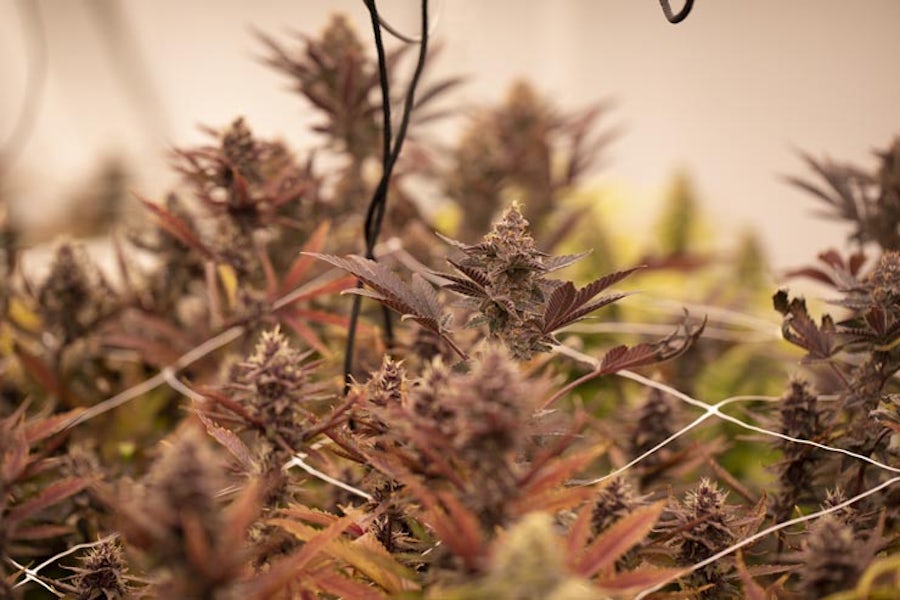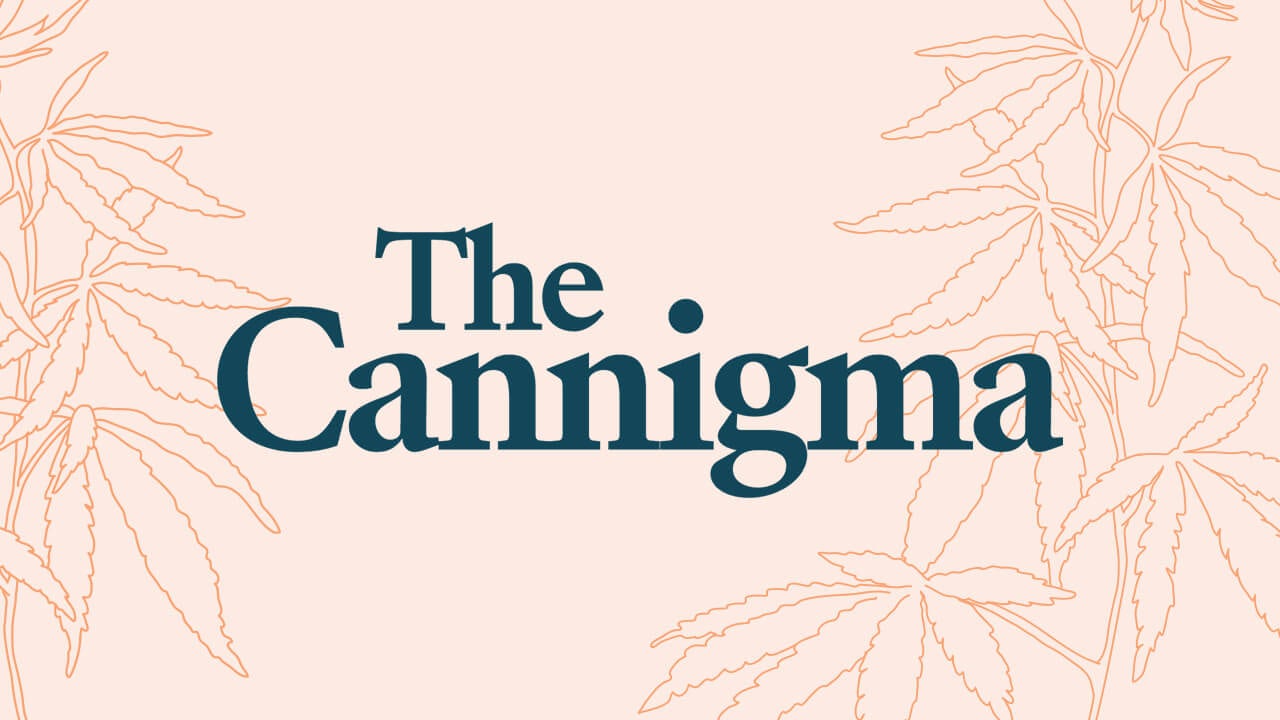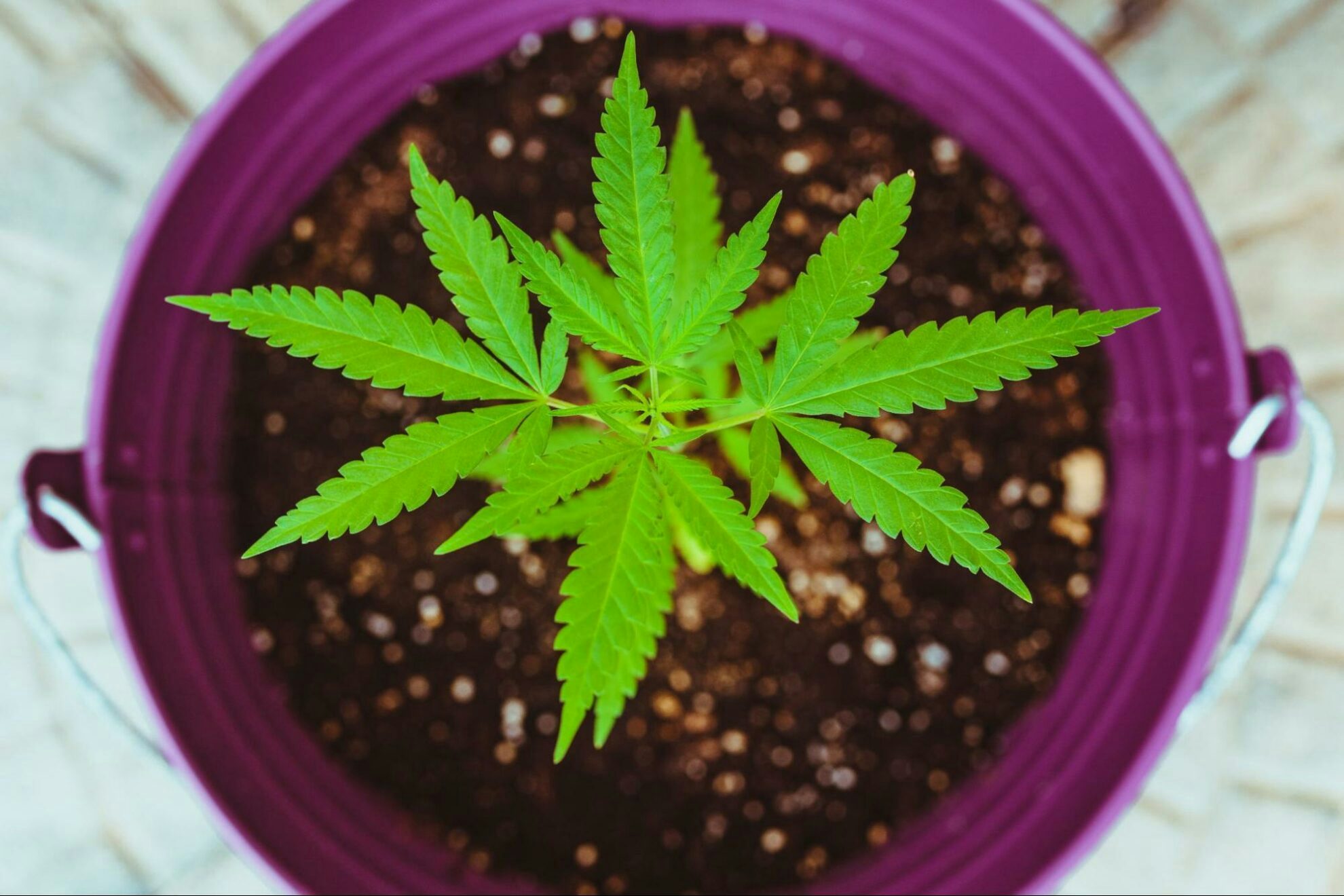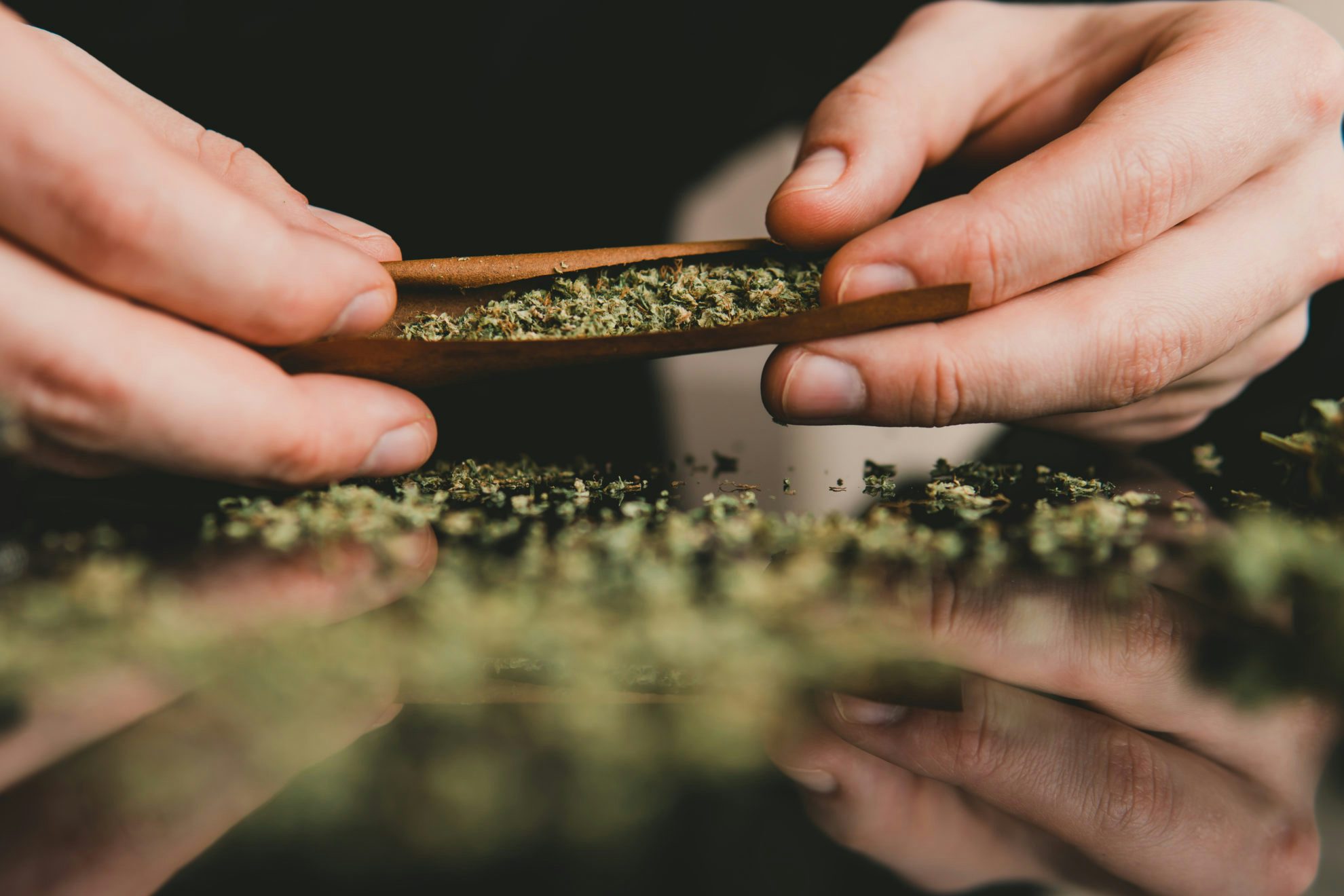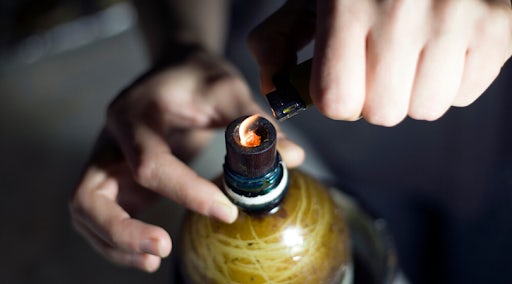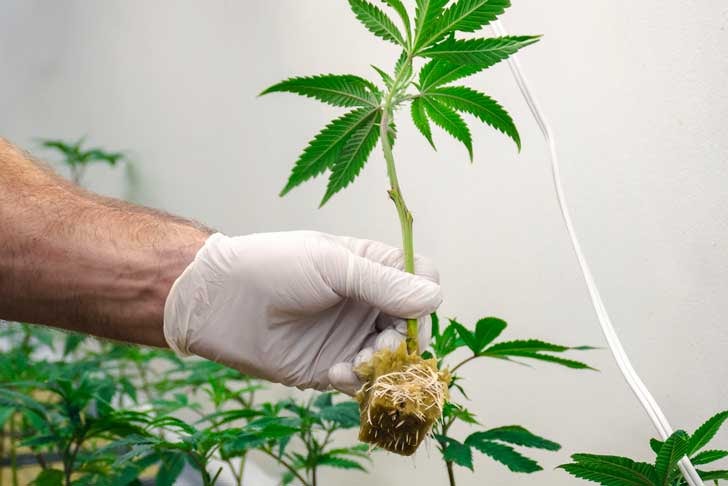This article is an excerpt from The Cannigma Cultivation Guide, which is now available for download in digital format
If you’re feeling confident about your growing skills, consider taking some time to train your plants.
“Cannabis training” refers to slightly modifying a plant’s growth to help increase the yield, either through Low Stress Training (LST) or High Stress Training (HST) methods.
Cannabis plants left unpruned will normally grow in a Christmas tree shape, meaning the top portion of the plant receives the most light, while the bottom portion is overshadowed. This is called apical-dominance. Cannabis plant training aims to even the playing field and allow the lower (sub-apical) branches of the plant to receive light, which in turn results in higher bud yields. Alternatively, some methods are focused on removing the lower sub-apical layer all together, so that the focus is purely on the best flowering stems at the top. 1
Low Stress Training
Low stress training (LST) starts during the vegetative stage. It requires strategically bending the stems (without breaking them), so that they spread out from the center of your cannabis plants. This results in shorter plants with several dominant colas (the flowering top of a plant) rather than taller plants with a single, main cola. The two main LST methods are Sea of Green (SOG) and Screen of Green (SCROG).
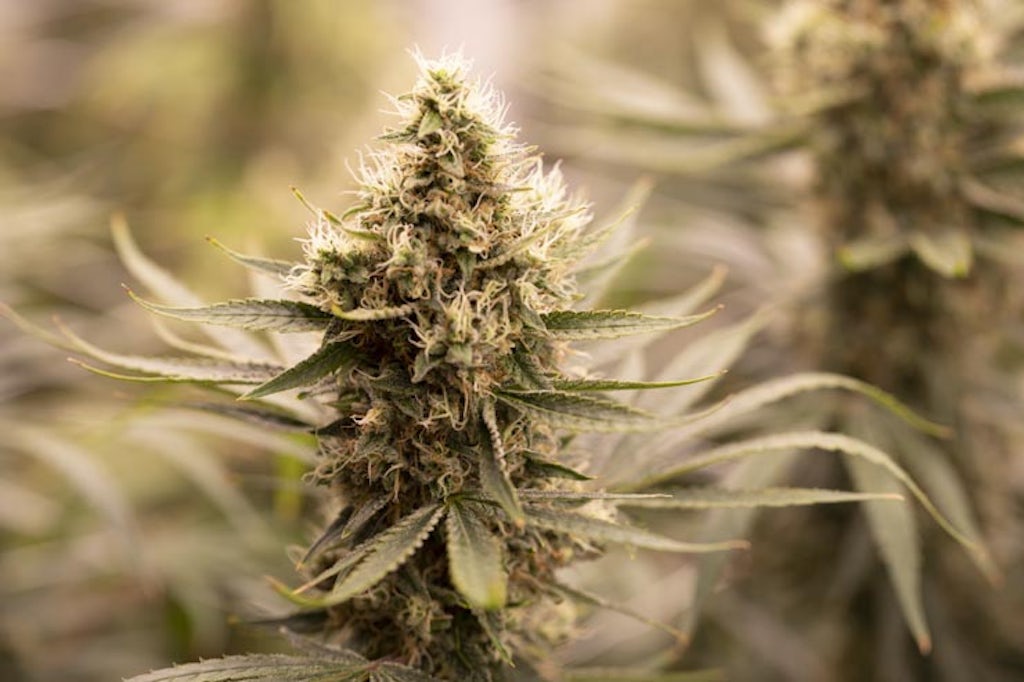
Sea of Green (SOG)
When using the Sea of Green (SOG) training technique, plants are planted close to each other and kept in a vegetative stage for a much shorter time than usual. The plants are transferred to a 12/12 light regime that promotes the initiation of the flowering phase. As a result, you end up with short and compact plants that flower quickly. This works especially well for short and bushy varieties.
This method helps to utilize the space and to increase yield and reduce the chance of losing the whole crop. Of course the negative is that you’ll need to plant more – thus increasing your seed cost. 2
Screen of Green
The main goal behind the Screen of Green (SCROG) method is to restrict your plants growing vertically and instead encourage lateral growth, out and away from the main stem. This is done by hanging a screen, usually made of plastic netting, above your young plants. When their branches reach the screen, they are weaved through and redirected into growing horizontally instead of vertically.
This method gives your crop a uniform height with large buds on each lateral branch, which receive much more light exposure leading to higher yields. The scrog netting also supports the lateral branches so they can grow extremely large colas that would otherwise be too heavy for the plant to support alone.
High Stress Training (HST)
You’ll need some good pruning shears for high stress techniques, as these methods require strategically cutting off certain parts of the plant.
Lollipopping is a high stress technique that requires removing the bottom leaves and branches of your cannabis plants. It is used by many growers as it often leads to higher yields.
If performed correctly, your plants should be thin at the bottom and round and heavy on the top – like a lollipop. Lollipopping uses a combination of pruning and defoliation to remove unnecessary branches from the lower portion of the plant, which will be overshadowed by taller stems during the flowering phase. It is usually performed at the beginning of flowering.
This process allows your plants to focus on developing the top section, where the best and biggest buds are. It can also be combined with SCROG to create a dense and even canopy.
Also known as the tie-down method, mainlining forces your plants to grow multiple colas of similar size instead of a single main one. It is done by cutting off the top main stems of your plants. This allows your plant to spread its resources equally among different buds with the same growing potential – instead of wasting energy on the underdeveloped, lower parts of the plant.
Every female cannabis plant develops one main cola and multiple small ones.The main cola, which tends to receive the most light exposure, produces significantly more buds than the small colas.
Super cropping is an exciting but challenging training technique that’s best suited to experienced growers.
This method requires you to do something counterintuitive – bend the branches downwards at about a 90-degree angle. As a reaction to this wounding event, the plants will produce a stress response that could lead to increased trichome production and a larger flower yield overall. The bend should be strong enough to break the fibers inside the branches while leaving the outer walls intact. If bent too hard, your plant may not recover. 3
Dig into The Cannigma Cultivation Guide – available for free digital download
Sources
- Trancoso, I.,et all (2022, June 22). Cannabis sativa L.: Crop management and abiotic factors that affect phytocannabinoid production. MDPI. Retrieved November 21, 2022, from https://doi.org/10.3390/agronomy12071492
- Green, G. The Cannabis Grow Bible, 2nd ed.; Green Candy Press: São Francisco, CA, USA, 2010
- Hamilton, R. (2022). Rebellious Supercropping. Garden Culture, (42), p. 42–43.
Sign up for bi-weekly updates, packed full of cannabis education, recipes, and tips. Your inbox will love it.

 Shop
Shop Support
Support